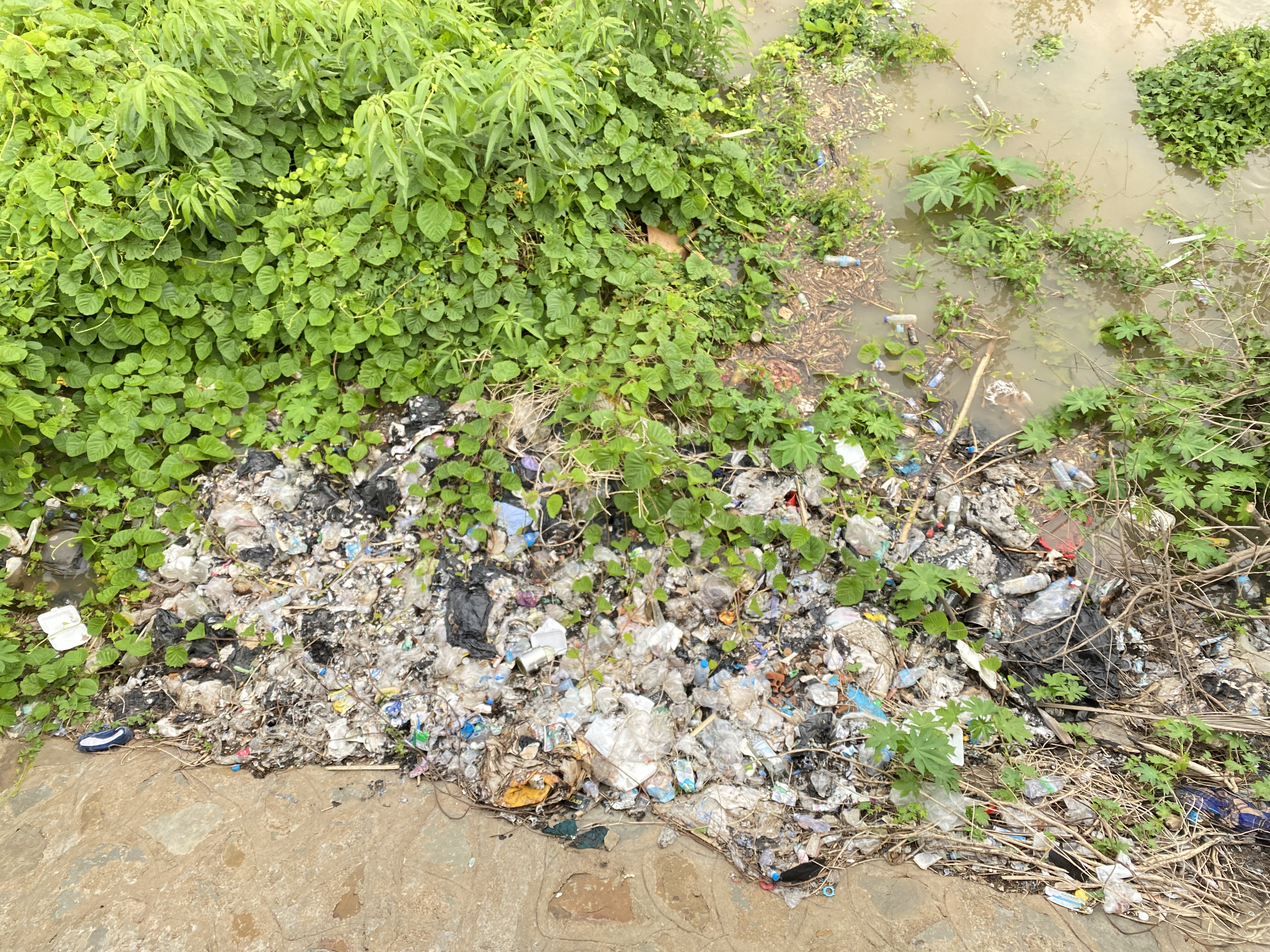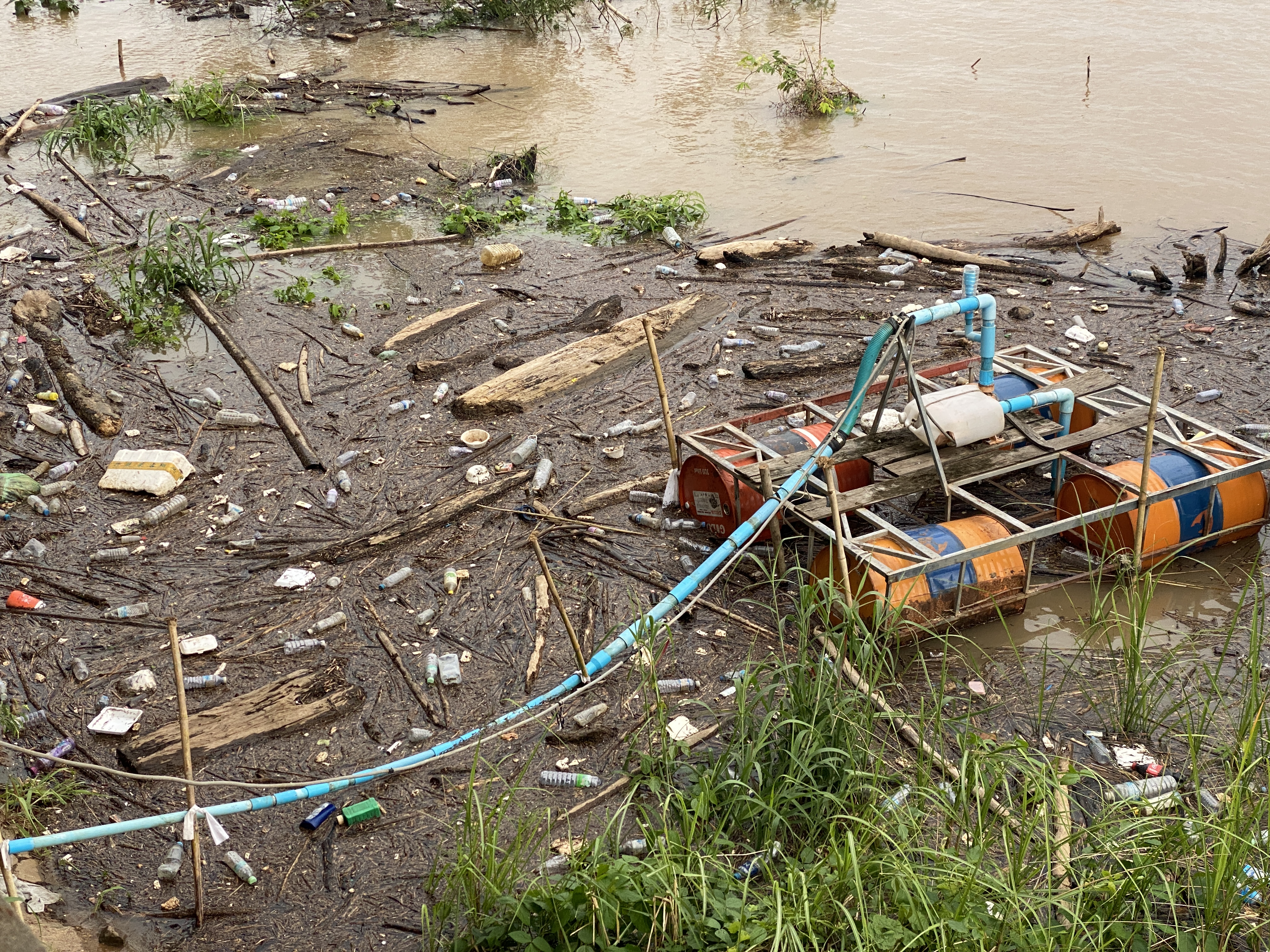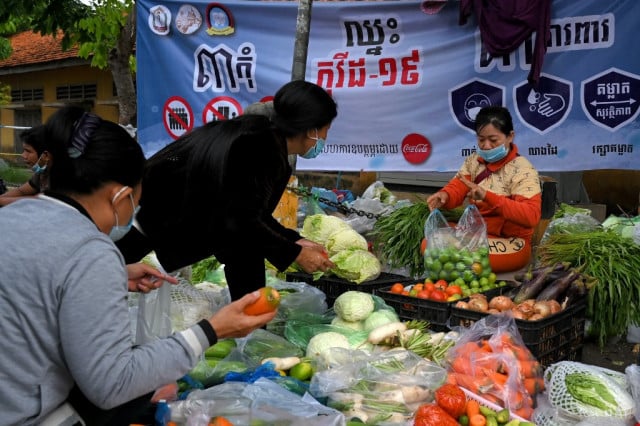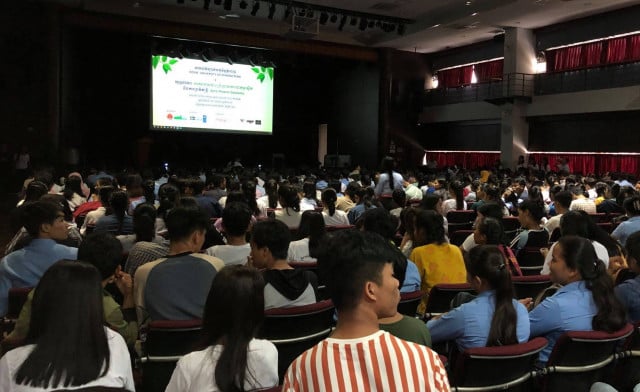Mekong Communities Fall Victim to Rising Pollution

- By Teng Yalirozy
- November 10, 2023 2:00 PM
KRATIE — Villagers on a remote Mekong island fear for their future as they struggle to cope with river water polluted with litter and improper use of chemical fertilizers.
“We bath, wash clothes, cook, and consume on the river. We don’t usually think of hygiene,” said Srey Boeun, 79, who lives in Samphin village in Kratie province.
Sitting on a bench in front of his wooden house, Srey Boeun looks worried about the waste and trash dumped in and brought to the river, where villagers fetched water for daily consumption.
In the dry season, Boeun, like everyone in his village, depends heavily on the river water. He stores rainwater for daily use in the rainy season. He boils water and buys drinking water, hoping that clean water will one day reach his neighborhood.
Cambodia's rural population is disproportionately affected by a lack of access to clean water compared to urban areas. Plastic trash bags frequently pollute drinking water.
Around 20 percent of the population, 3.4 million out of 16 million, lack access to clean water and a third cannot properly wash their hands.
In 2018, roughly ten people died, and 140 were hospitalized in Kratie province after drinking contaminated water from the Prek Te River, which flows from Mondulkiri into the Mekong River.
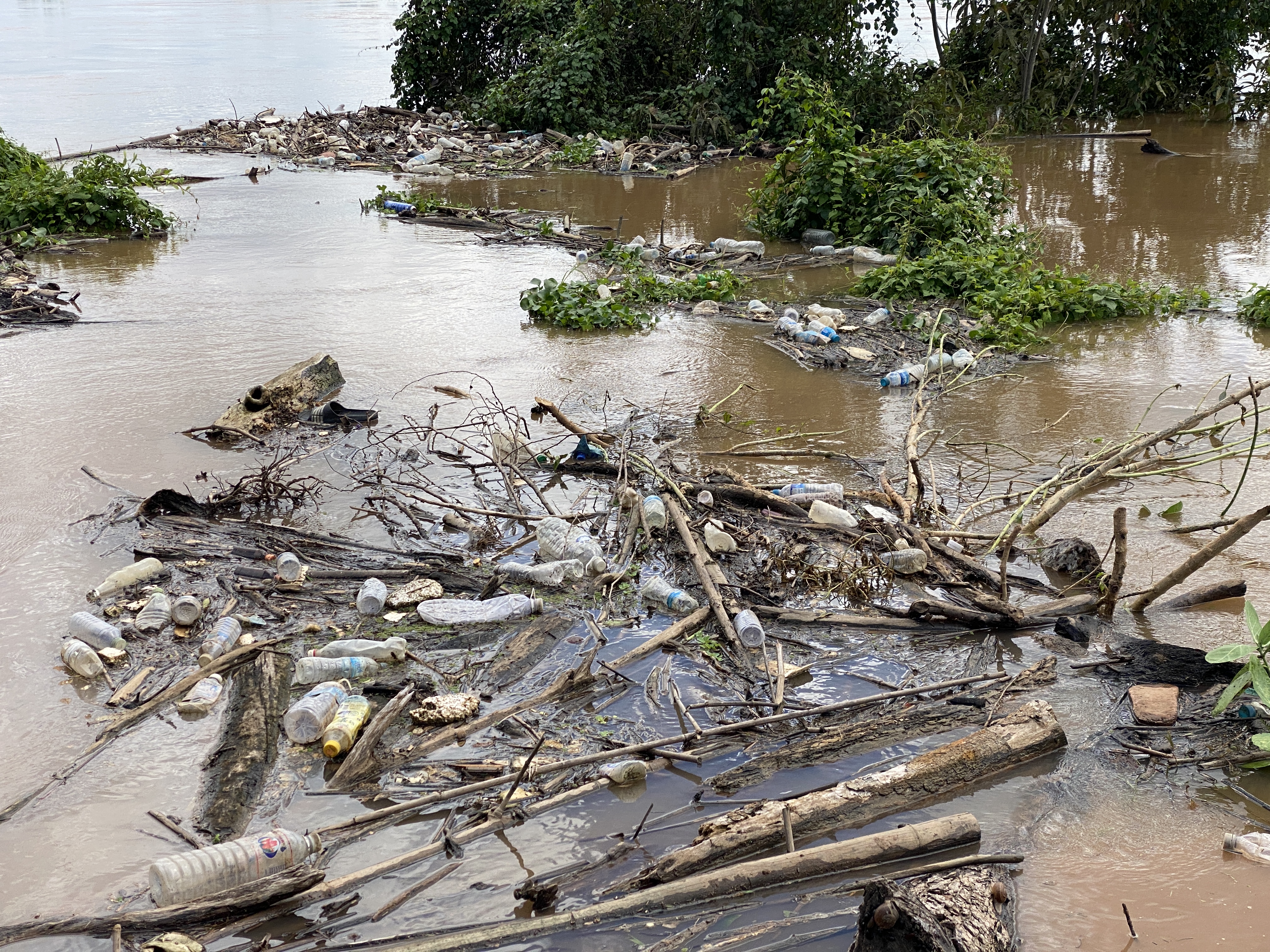
Water Quality Dispute
Human activities have degraded water quality globaly, with increasing pressures on the Mekong region due to population growth and infrastructure developments.
Data from the Water Quality Monitoring Network of the Mekong River Commission (MRC) shows deterioration in parts due to rising nitrogen and phosphorus levels.
According to the current draft of the State of the Basin Report 2023, phosphorus is decreasing, while nitrogen compounds (nitrate and total nitrogen) show an increasing trend from 2010 to 2021, with annual average values well below the threshold for the protection of human health and aquatic life.
Yet, the data shows that the water quality of the Mekong River in Kratie and Stung Treng provinces was “excellent” from 2010 to 2021.
“However, we observed that nitrogen and phosphorus occasionally exceeded the target values of the Water Quality Index for the Protection of Aquatic Life and Human Health,” said a senior officer who has worked on the water quality at the MRC Secretariate for years.
“Therefore, we’re taking into account this observation with careful evaluation for further actions.”
A study from the Yale School of Environment says that the Mekong River, once a healthy mud brown, has turned a pristine blue due to upstream dams eliminating nutrients.
This causes erosion and highlights the river's growing health issues from dam building, overfishing, deforestation, plastic pollution and climate change.
Another study evaluated water quality in the Lower Mekong Basin using biological and physical-chemical data from the last two decades and found that during the 2000s, the region had unpolluted water, but over the last decade, it has degraded.
The senior officer at the MRC said that the nitrate concentrations are mostly below the target value, which is 5mg/L mentioned in the MRC Technical Guidelines for the Procedures of Water Quality (PWQ).
It means that the water quality in the Mekong River meets the objective of the PWQ, which is to maintain acceptable or good water quality important to promote the sustainable development of the Mekong River Basin, he said.
Waste and Toxic Substances, the Long-Term Killer
Dam building and other human activities strain natural resources, causing water shortages in the Mekong Delta, subsidence, and saline intrusion. Diverting water for irrigation and extracting sand and gravel from river beds exacerbate these issues.
The preliminary findings of the MRC assessment revealed that the Don Sahong and Xayaburi hydropower dams in Laos PDR had a moderate influence on water flow, requiring another 2-3 years to draw firm conclusions from the dam development impact.
At the same time, Srey Pheak, head of the fishery group and deputy administrator of Sampin village, notices that the river water in his area has become more toxic as a result of a number of villagers using chemical fertilizers for their crops, which penetrate the soil and flow poisonous substance down the river.
“Some people don’t understand the importance of the river water. They dump trash and overconsume toxic chemicals,” he said. “Trash comes from the villagers and is flown from the upper stream in Stung Treng province to our area.”

According to the Food and Agriculture Organization report, Cambodia's fertilizer use increased from 38,693 tonnes in 2005 to 134,053 tonnes in 2018, with 100 percent imports. Fertilizer use per hectare increased from 10kg to 33kg, including organic fertilizers.
The Asian Development Bank says in its roadmap about Cambodia’s Agriculture issued in July 2021 that pesticide use has surged since 2015, particularly in dry-season rice cultivation and vegetable sectors.
Over 3.2 million liters of 100 pesticides are used annually, mainly from Thailand and Vietnam, with informal trade prevalent. Overuse or misuse risks poisoning and ecosystem pollution, ADB says in the Cambodia Agriculture, Natural Resources, and Rural Development Sector Assessment Strategy and Road Map.
Men Nach, a porridge seller in Samphin village, says she sees a lot of trash at the riverbank and in the river when she takes a boat to the market.
“I see trash floating on the river surface. I don’t know where it is from,” she said, adding that she is concerned about the increased amount of trash along the river, which could harm villagers’ health.
She uses river water to make porridge and sells the dish every morning to students, older people and people in the village.
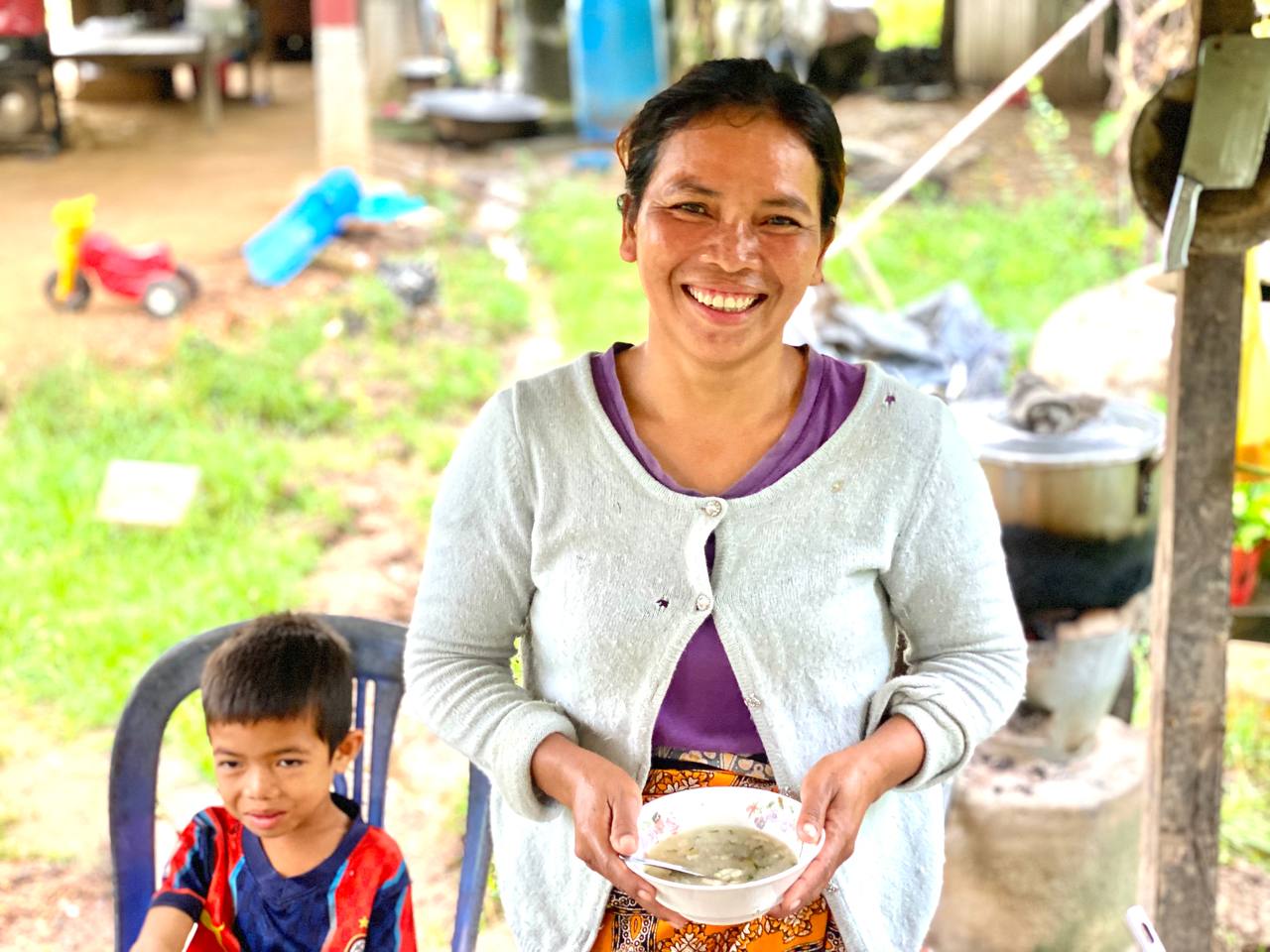
Cambodia, Laos, Thailand, and Vietnam are raising concerns about the impact of plastic debris and pollution on their rivers and freshwater fauna, estimating annual plastic waste production at eight million tonnes.
Phnom Penh, Cambodia's capital city, is releasing 218 tonnes of plastics into the Mekong during the rainy season, according to Shomi Kim, representative of the Global Green Growth Institute (GGGI).
The causes of the water quality deterioration can come from natural sources and human activity, said the MRC officer. “For example, the release of heavy metals from soil rock, and geological exposure can cause contamination in river water,” he said.
Human sources can be discharge of wastewater, the impact of agricultural activities, and mining activities.
In the Mekong River Basin, the occasional exceeding of nitrogen or phosphorus values was detected at stations such as Houay Mak Hiao in Lao PDR, and My Tho in Vietnam, where urbanization and agriculture activities are extensive, according to the MRC officer.
“Wastes and chemical fertilizers can be potential sources causing the increase of nitrogen and phosphorus in the river,” he said.
“However, at this stage, there is limited scientific evidence to conclude that those are the major contributors to this matter in the Mekong River Basin.”
Hope for the Better
Since water resources play an essential role in supporting sustainable development in the Mekong River Basin, any negative changes in water quality will affect human life along the Mekong River, the senior MRC officer stated.
“Polluted water has a higher chance of transmitting waterborne diseases that will impact human health.”
He said another potential impact is the increased cost of water treatment for river water to be potable and the need to seek alternative freshwater sources such as groundwater.
“The MRC continuously monitors the water in the Mekong River as well as its main tributaries to identify the water quality issue and suitable actions timely,” he said. “We will inform our member countries if any instance occurs within our watch.”
Srey Sophea, a mother of three daughters and whose family depends heavily on the river water, keeps her fingers crossed for the future of the Mekong River.
Her family would face hardship and lack of water if the river became acutely polluted and no longer usable.
“I am concerned that my children would get sick if consuming dirty water on a daily basis,” she said.

Men Nach supports three children and a senior mother by selling porridge at home while her husband goes fishing. The family is solely reliant on the Mekong River.
Without clean water, Nach knows she can never cook her porridge. Her husband could never make money from fishing if the river becomes polluted.
It would be tragic for her family. But for the river, Nach sees it as catastrophic.
“Mekong River has unfailingly enriched the lives of countless generations,” she said. “The river is worthy of respect, and it should flow with pride and dignity.”
This story is produced with support from Internews’ Earth Journalism Network through Mekong Eye.
